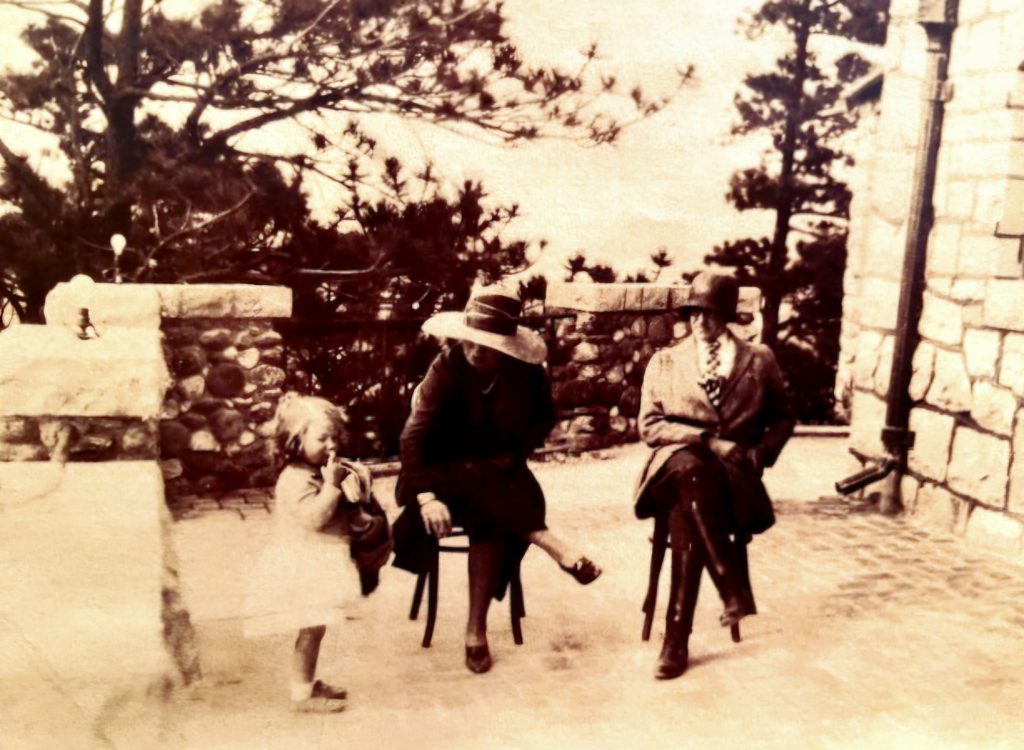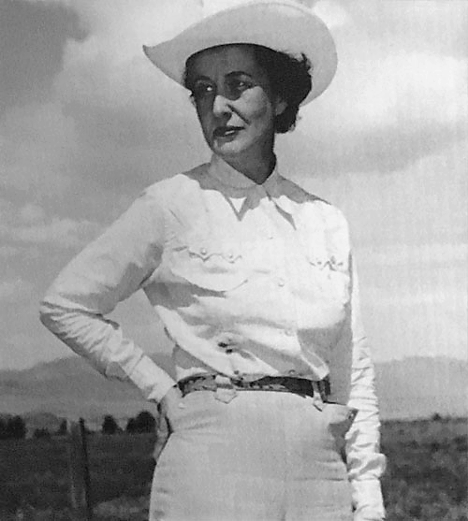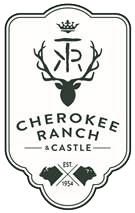History
FROM THE 1890's TO THE PRESENT
Cherokee Ranch & Castle includes land that belonged to two separate homesteads in the late 1890s: the Flower Homestead and the Blunt Homestead. The Johnson Family moved from the East and purchased the Flower Homestead in 1924 and built the 1450s Scottish-style Castle. They sold the property to Tweet Kimball in 1954. Tweet purchased adjacent land that had been the Blunt Homestead and renamed both pieces of land Cherokee Ranch, which today includes 3,441 acres of natural beauty and wildlife. In 1996, Tweet worked with Douglas County and a citizen’s group, The Douglas County Open Lands Coalition, to protect Cherokee Ranch through a Conservation Easement. The Foundation holds the deed to Cherokee Ranch. In 2010, The Cherokee Ranch & Castle Foundation purchased an additional 300 acres adjacent to the Ranch.
In light of Tweet’s desire for Cherokee Ranch to honor the history and legacy of Indigenous Peoples and Nations, including her appropriation of names reflecting Indigenous culture, Cherokee Ranch & Castle Foundation honors and respects the enduring relationship that exists between these peoples and nations and this land for which they are the original stewards.
The Flower Homestead – Late 1800’s

Frederick Gerald Flower filed for his homestead on August 6, 1894. He had renounced his English citizenship two years prior and planned to make a life here. He constructed his stone house and moved in with his wife, Amy, and his sister, Beatrice, on January 18, 1895. The Flower family home was perched on the edge of a high plateau with stunning views of the Front Range. The long trail to the house begins at the old territorial road, now named Daniels Park Road. Back then, there were very few inhabitants nearby due to the land’s rugged terrain. On his homestead claim form, Flowers wrote that he had plowed twelve acres and strung a half-mile of barbed wire to contain his livestock. Local lore says that he actually used these twelve acres to raise potatoes. Frederick Flower prospered and added land to his holdings. At the time of the sale of his ranch to Charles Johnson in 1924, the property included 2,380 acres.
John Blunt brought his family west in 1868 following his service in the Civil War and homesteaded land on East Plum Creek near the town of Sedalia. Their first home site was abandoned, allegedly because the site was too cold. They built a new house in 1873 and named their homestead Sunflower Ranch. At Sunflower Ranch, the Blunt family raised cattle and planted wheat and sorghum on the creek terraces. Three generations of their family ran the cattle and farming operations at Sunflower Ranch for over 81 years. They gradually purchased adjacent homesteads and expanded to 1,550 acres. In its place and time, their 1,370 square-foot house was proudly elegant, a most unusual house in the rural landscape. The house seems to have no stylistic precedent in pattern books of the mid and late nineteenth century, and the design is attributed to the inventive common sense of John Blunt.
The 1873 Blunt house still stands today at the center of the outbuildings at Cherokee Ranch Headquarters. An apple tree, brought from Kansas by John Blunt in 1868, stands east of the house. It is believed that branches trimmed from this apple tree were used as the porch columns for the Flower Homestead. The Blunt house is recognized as one of the oldest structures in Douglas County. Tweet Kimball purchased the Blunt holdings from Ray Blunt in 1954.
The Blunt Homestead – Late 1800’s

Johnson Family – Early 1900’s

Charles Alfred Johnson (Carl) was originally from Boston but discovered Denver during a trip with his cousin. He fell in love with the West and moved to Denver in 1891. He began a real estate business and is well known for the development of Denver’s historic Park Hill neighborhood. Carl and his wife, Alice Gifford Phillips, settled south of Denver. Carl purchased the Flower Homestead property for $5 an acre in 1924. Soon after the purchase, Carl hired architect Burnham Hoyt to begin construction of his residence that turned from a summer home to his year-round residence. Charlford, built from 1924 -1926, was named after Alice’s son Gifford and Alice and Carl’s son Charlie. Hoyt designed the residence with architectural details from English and Scottish castles and other country homes.
When Carl’s health began to fail in 1949, he and Alice temporarily moved to California. After Alice’s death in 1950, Carl returned to Denver each summer and stayed at the Brown Palace Hotel. His visits were always front-page news. Carl died in1954. After growing up at Charlford, Carl’s son, Charles Johnson, Jr. (Charlie), lived at Charlford with his wife Katherine Sweet Johnson, and their two children. Before selling the property to Tweet Kimball in 1954, the family traveled back and forth between Charlford and California because of Charlie’s health problems.
Mildred Montague Genevieve Kimball, also known as “Tweet” Kimball, lived at Cherokee Ranch from 1954 -1999. An avid equestrian, she purchased two parcels of land, Charlford from Charles Johnson, Jr., and the adjacent Blunt Ranch (formerly known as the Blunt Homestead) from Ray Blunt in 1954. She renamed both pieces of land Cherokee Ranch, and their combined total acreage is 3, 441 acres. Tweet Kimball also made her mark by renaming all the building groupings on her land. The Flower Homestead became Chickamauga, Charlford became Cherokee Castle, the Johnson Farm became Wauhatchie and the Blunt Homestead became Amnicola.
When Tweet purchased the Blunt Property in 1954, she wanted to use the buildings as the hub of her cattle breeding operations. Tweet brought Santa Gertrudis cattle from Texas to Colorado. This breed was developed to thrive on the native grasses of the South Texas brush country. Tweet wanted to breed them in the colder climate of Colorado, but her critics thought it couldn’t be done. She proved them wrong – Santa Gertrudis are now bred all over the world, and Cherokee Ranch is recognized within cattle breeding circles for this legacy.
In 1996, Tweet Kimball worked to protect Cherokee Ranch through a Conservation Easement. The Foundation holds the deed to the land that is now protected as a wildlife sanctuary, and a small herd of Santa Gertrudis cattle are still bred on the land.
Tweet Kimball – Mid 1900’s


